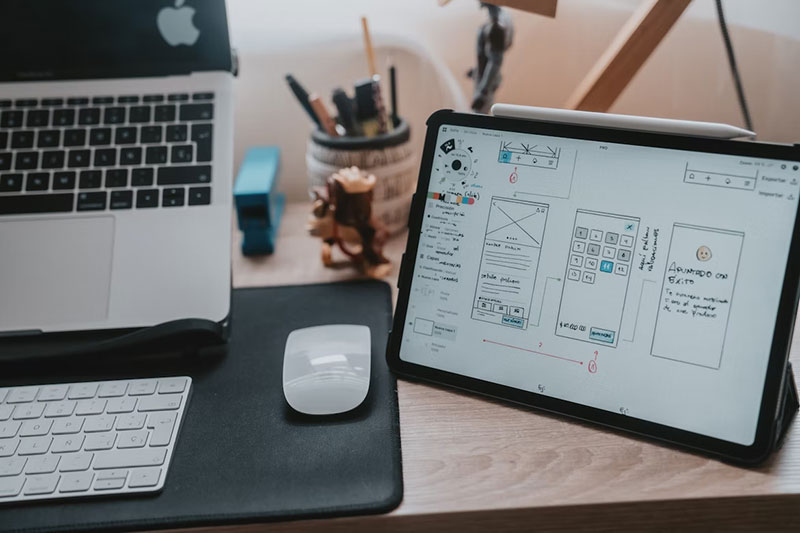User experience (UX) design is an essential part of creating any product. It focuses on how users interact with a product and the overall user journey, from first contact to conversion. UX designers must understand their users’ needs, behaviors, and motivations in order to create products that are both useful and enjoyable.
Data plays an important role in understanding all these elements for successful UX design. Through data collection, analysis, and testing, UX designers can gain valuable insights into their target audience which can help inform decisions throughout the design process.
By leveraging data-driven strategies such as A/B testing or heat mapping technology, UX designers can ensure they are delivering the best possible user experiences every time.
Data Can Help to Inform Design Decisions
There’s one secret weapon in your arsenal that can help guide your creative choices: cold, hard data. You see, when you’re crafting an experience tailored to the unique needs and preferences of your users, data proves to be the ultimate compass.
It allows you to uncover the:
- Trends
- Patterns
- Even the unspoken desires of your audience
By weaving data insights into your design process, you can ensure that your end product not only looks fantastic but also feels:
- Intuitive
- Relevant
- Truly user-friendly
Before you embark on your next design project, remember never to underestimate the power of data in shaping experiences that truly resonate with the hearts and minds of your users.
It Can Be Used to Identify Problems with Existing UX Designs
It’s incredible to see just how much impact data analysis can have when it comes to identifying potential issues within existing UX designs or uncovering golden opportunities for improvement.
By carefully examining the way users interact with a product or application, data can reveal any snags or hiccups that might be affecting the overall experience. You might even discover patterns and trends that were previously undetected, granting you the power to tweak and polish your UX design until it’s a seamless, user-friendly masterpiece.
Embracing the importance of data in UX design is truly a game-changer, so let your curiosity roam free and dive deep into the analytics to create something truly exceptional.
Data Allows Designers to Measure User Engagement
UX design can be a powerful, complex process that involves a lot of data.
Data allows designers to measure user engagement, better understand interactions users have with products, and pinpoint areas that need more development or optimization. What’s more, by examining the data and making the most of GA, GTM & GSC, designers can measure the success of their initiative over time and make more informed decisions. This will deliver improved user experiences through an iterative process.
Ultimately, having access to the collected data provides insight that would otherwise be overlooked and can provide countless iterations on a project before it is released for use by others.
Understanding Data Trends Can Help UX Designers Develop New Solutions
In the dynamic world of UX design, data has emerged as the ultimate driving force for crafting seamless and effective user experiences. Designers who not only acknowledge but also appreciate the power of data have a distinct advantage when it comes to predicting trends and creating impactful solutions.
By staying ahead of the curve through monitoring behavioral patterns, UX professionals can harness these insights to foster connections with their users on a whole new level. Ultimately, making data-driven decisions enables designers to bring their A-game in sculpting digital experiences that truly resonate with users, culminating in long-lasting, flourishing user relationships.
Data Can Create Measurable Goals
Data can give us insight into customer behavior, desires, and preferences both for what exists now and for where trends are heading in the future. That’s why data presents an opportunity to move past subjective opinions and focus on measurable goals that lead to meaningful UX design results.

Designers can use analytics tools to evaluate the success rate of a project before committing resources, allowing them to make informed, objective decisions throughout the entire development process. Not only does this offer improved customer satisfaction but also better ROI in the long run.
Understand the Importance of Data Today
Data is a powerful tool in the world of UX design, and those who understand its importance are well-positioned to create user experiences that truly resonate with their customers. By leveraging data trends and measuring customer engagement, designers can craft solutions that lead to long-lasting relationships between users and products or services.
Ultimately, having access to data allows designers to make informed decisions throughout the entire development process, leading to improved customer satisfaction and better ROI for businesses.
It’s clear that understanding how data works within your product’s environment is essential for success in today’s digital landscape – so why not get started now?
The post Understanding the Importance of Data in UX Design appeared first on Design Your Way.
Source: https://ift.tt/dvTShmX

No comments:
Post a Comment